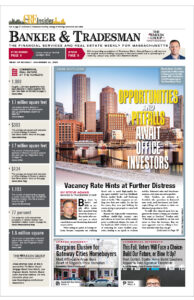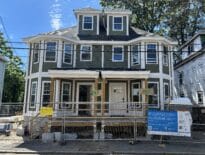
Rachel Heller
This month, Greater Boston Association of Realtors announced the median price of a single-family home in its piece of the Greater Boston housing market has hit $1 million, while the entire region’s median single-family sale price hit $850,000 according to The Warren Group.
That same day, National Low Income Housing Coalition’s annual Out of Reach report ranked Massachusetts as the 4th least affordable state for renters.
Massachusetts is an incredible place to live. But the high costs of housing are making it harder to live here.
That is bad news for people who want to live here, for our neighborhoods and for our economy. The good news is that we can do something about it.
The Healey-Driscoll administration has set an ambitious goal of creating 222,000 new homes over the next 10 years. Hitting that number while preserving the homes we’ve got will stabilize home prices and rents, putting the commonwealth on the path to a future where everyone can thrive.
To meet the goal, we will need multiple strategies that include maximizing our current tools and adding new ones.
Planning Keeps Towns in Control
Massachusetts has a long commitment to affordable and mixed-income housing.
We are one of a handful of states with our own state public housing stock, we have our own state rental assistance programs and we have Chapter 40B: a law requiring every community to have affordable housing.
In fact, Chapter 40B has been the state’s most successful housing production tool, resulting in well over 70,000 homes throughout Massachusetts.
It works because it’s a requirement for every community and it allows multifamily housing to get built. Communities know how much affordable and mixed income housing they need to hit the state’s 10 percent required benchmark.
That creates an opportunity to plan for growth and Massachusetts has a lot of planning tools to help them. Cities and towns can create housing production plans, designate areas for growth, adopt Chapter 40R “smart growth” districts, implement effective inclusionary zoning policies and more.
When communities plan, they remain in the driver’s seat when it comes to development, fostering vibrant Main Streets and meeting the needs of current and future residents. The 40B law also allows housing to get built if communities haven’t hit their benchmark, haven’t taken actions to allow multifamily development or require too many restrictions for development to pencil out.
Chapter 40B works because it allows the creation of mixed-income housing and gives communities a framework to plan for growth and affordability.
Big Strides in Recent Years
Although our most successful housing production tool, 40B alone cannot get us to 222,000 new homes. Nor can it do so at the speed we need.
Recently, the Legislature has delivered a whole new set of tools to help.
For 177 communities, the MBTA Communities Act requires them to designate areas where multifamily housing can be built by right.
The Affordable Homes Act allows accessory dwelling units in every community, funds affordable and mixed-income rental and homeownership opportunities, invests in supportive and public housing, creates the new State Office of Fair Housing to ensure that housing opportunities benefit everyone and opens certain state-owned land for housing development.
Alongside new production tools, the Healey-Driscoll administration has added infrastructure programs to support communities as they grow.
Three Bills to Pass This Year
Our new tools are vital to meeting our housing goals. And we need more tools to get more housing faster. Thankfully, there are no shortage of policy solutions.
The Healey-Driscoll administration’s new state housing plan identifies housing needs in every region of the state and the report of the Unlocking Housing Production Commission details dozens of recommendations to fuel housing production, including scaling modular development so that we can build faster.
In addition to recommendations by the Unlocking Housing Production Commission, several bills are currently before the Legislature
The Yes In My Back Yard (YIMBY) legislation would allow for three to five homes on all lots, eliminate minimum parking requirements for new housing development and eliminate minimum lot size requirements.
The Yes In God’s Back Yard (YIGBY) bill would allow apartment buildings on property owned by religious organizations.
And this month, Gov. Maura Healey filed her Mass Ready Act environmental bond bill that authorizes more funding for mixed-use housing development and removes permitting barriers for priority housing developments.
The Legislature should continue their good work on housing and pass these bills this year.
After decades of decisions in our communities that have limited growth and driven up home prices and rents, we are creating new tools and sharpening old ones to meet our state’s housing goals and make it possible for everyone to prosper.
Today’s Massachusetts is one we planned for by historically using zoning to say “no.” Let’s now use zoning to say “yes” to a bright future we all want and deserve.
Rachel Heller is the CEO of Citizens’ Housing & Planning Association (CHAPA).






